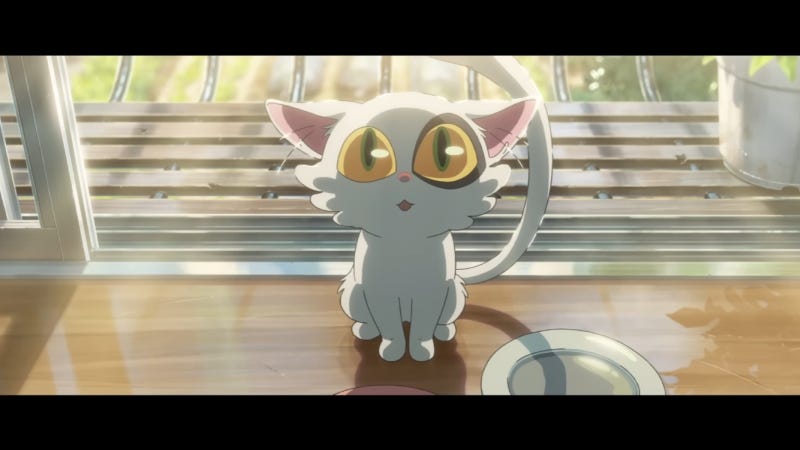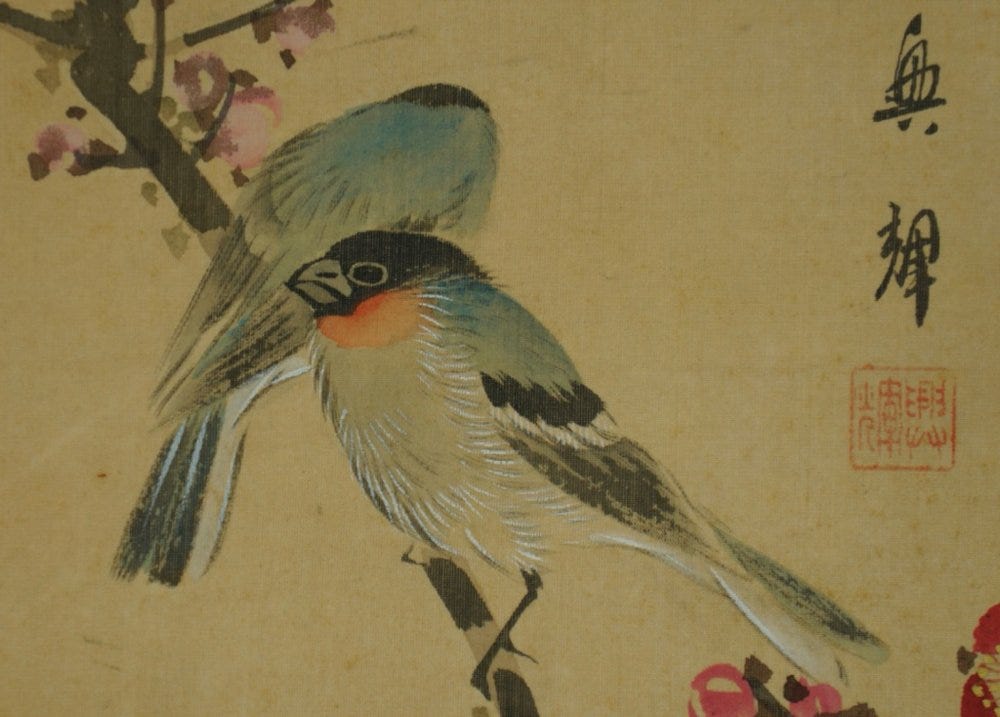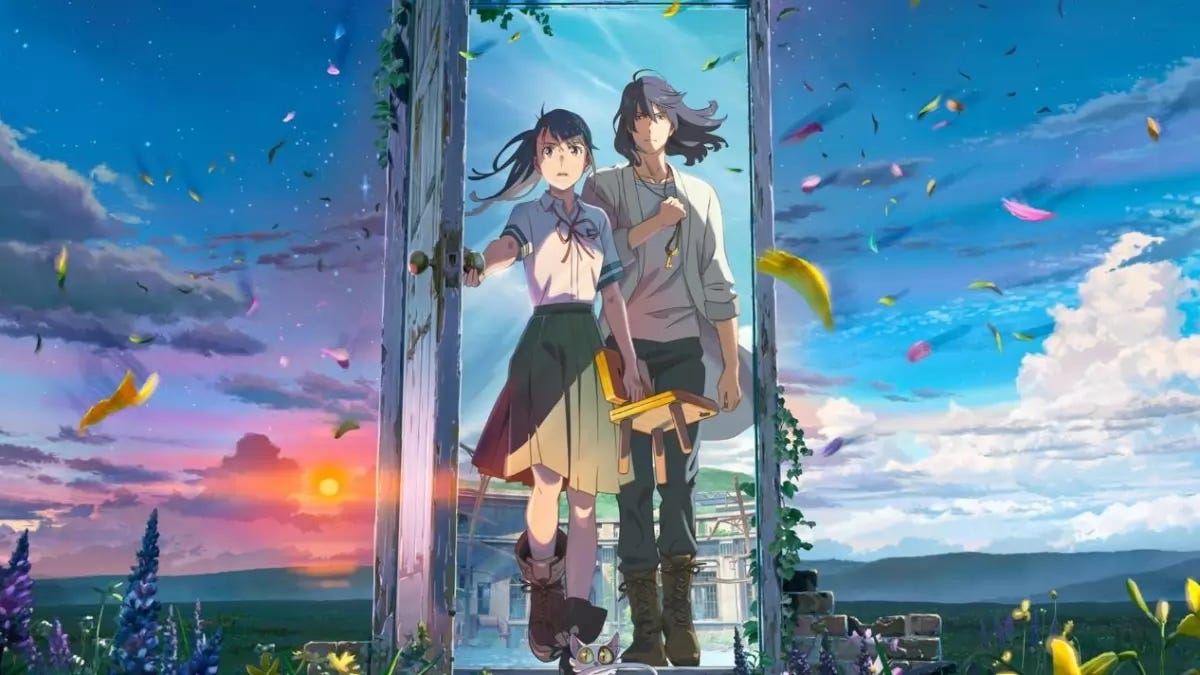
Hot take but I don’t think chairs are sexy.
So.
Suzume Iwato (Nanoka Hara) falling in love with her little yellow chair wasn’t doing it for me
BUT
I have been told that the chair came into play because this was supposed to be an LGBT romance story and the executives that be denied Makoto Shinkai. Shinkai’s solution was easy:
“If you won’t let me write this sweet, lesbian love story. Then you get chair.”
And so we got chair.
Suzume meets some dude bro who looks like Howl and he locks abandoned doors that reveal a darker, more dangerous world parallel to ours.
Does the monster look dangerously phallic?
Yes.
Does the music absolutely slap?
Oh heck yes.
Does our protagonist follow her love interest courageously, albeit recklessly?
100%.
But there’s a lot more licking and kicking beneath the surface.
The themes, the character development, the vicious internal and violent external conflicts.
This movie did so many things right, but that’s why the shortcomings feel so out of place.
Let’s not get into the nitty gritty details of what about this spectacular movie disappointed me, and instead appreciate it for the master class in animation and filmmaking that it is.
[And if you like this newsletter, I’m so sure you’ll like these other works from the archives: Bocchi the Rock 1, Bocchi the Rock 2, Bocchi the Rock 3 (I was really obsessed with Bocchi at some point), The Bad Guys, Monster House, Heroines Run the Show, Wotakoi, Clean Freak Aoyama Kun, Given, Little Witch Academia].
Lock and Key
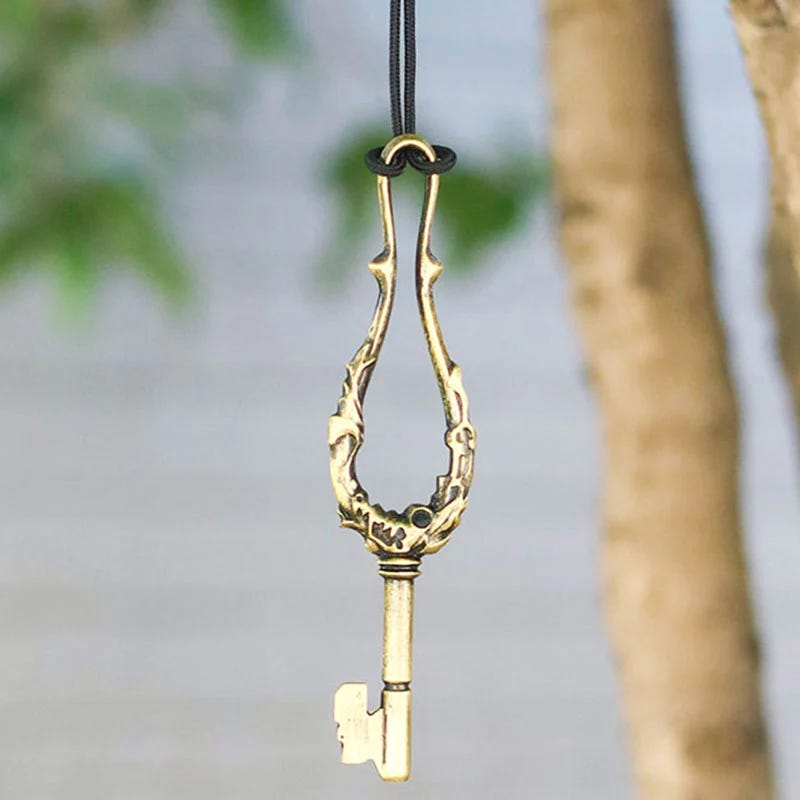
Behind every locked door, be it a video game or a movie or real life, means that somewhere out there, there is a key.
I remember the strange obsession in America, early 2000s, where we just loved keys and hanging them on chains from our necks and stashing them away like some Live, Laugh, Love Sméagol.
The key in this movie is very sexy/cool looking. They knew what they were doing when they gave that key a brassy shaft and that chicken wishbone shaped handle.
But more than the aesthetics, I love the metaphor. Of things within ourselves that we lock and keep from the world. Of visually seeing how our inner demons manifest when left alone. Of being the only person able to protect yourself from…yourself.
With the lock and key there is something hidden, something forgotten, and maybe something best left alone.
Suzume touches on all of that with their characters and watching how the lock and key motif undulated around each other and released more than what each character bargained for?
Breath-taking.
Doorways
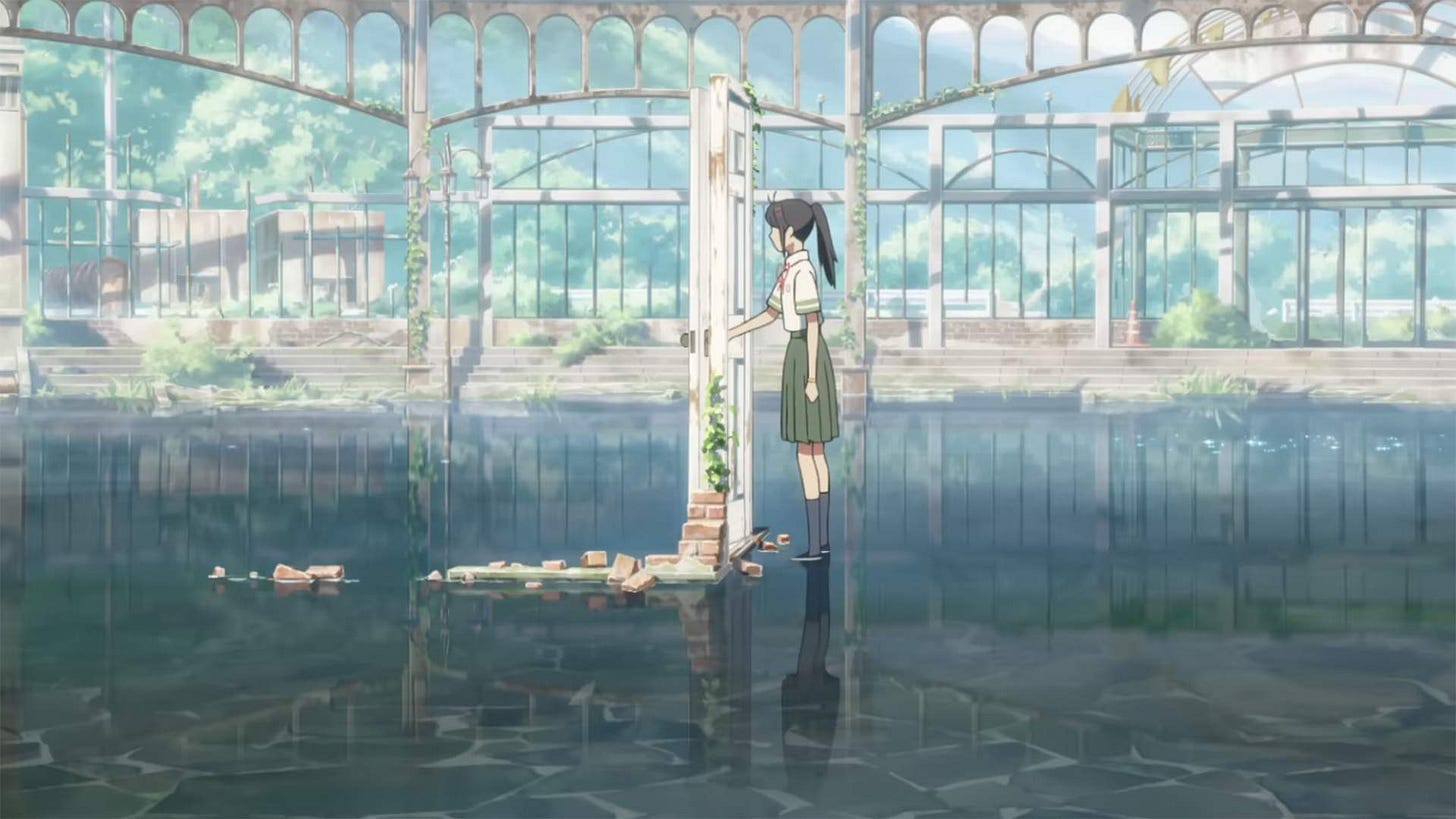
What is a door but a rectangle in space?
Delineating one room from another, the inside from the outside, the personal and the private. As the key locks and keeps things separate with a finality, the doorways can simply be seen as the openings.
Visual representation of one space beginning and ending, it shares metaphorical meaning with the lock & key.
While the lock & key can deny entrance, the doors exist as is, as portals to new or familiar realms. That’s why there’s that saying that goes
“One door closes and another door opens.”
Because doors are fickle that way. Because doors hold space and promise (be that good or bad depends on the door and who is reaching for the handle).
Eyes are the doorways to the soul. The 玄関 or genkan which is Japanese for door or entryway visually looks like a little doorway. Like we’re passing through the characters, because that is what a doorway is.
It’s the liminal space we travel through, a vehicle that we use to get from point A to point B in fiction and in real life.
A doorway can’t be inherently bad, it’s what’s on the other side that can sway us to fascination or fear.
Cats
I love cats.
But I am also severely allergic to them. I always forget that until I’ve spent 2+ hours at someone’s apartment and the dander has finally forced my lungs to reconsider that maybe, just maybe I am allergic and breathing shouldn’t really be this difficult.
Cats, in popular folklore and in modern acceptance, are harbingers of misfortune. Paint that kitty black and all of a sudden we have a laundry list of curses and misfortune that are to befall you and your kin.
Cats in this sense are one and the same. The cat in Suzume takes on the appearance of a cat familiar and its very existence is a point of contention for all those it meets. Souta gets turned into a chair. Suzume goes on a wild chase to find this cat across Japan. It’s one brand of bad luck tumbling into another, but instead of the superstition fueling this cat’s misery, this cat is the direct cause of all the problems.
Which is a tough hairball to swallow for all the cat lovers out there.
Sparrows
すずめ or Suzume means sparrow in Japanese. As it’s the titular character’s name, she embodies the name well.
Flighty and free as a bird, beholden to no one (not even her lovely aunt who takes her in and cares for her), and determined to travel and find her flock.
Suzume is adventurous and carefree but her heart is in the right place. She wants to do what’s right. She has to.
Instead of a cat chasing the bird like some Tweety Bird and Sylvester shenanigans, Suzume is chasing a cat throughout the narrative. Going against the expectation of nature and society, doing something unheard of and demanding the right to do so.
Who ever heard of a bird chasing a cat?
Who ever heard of a bird successfully capturing a cat?
And to that effect, the only way Suzume catches this cat is because it allows itself to be caught. Because even as animalistic as this metaphor is, the cat truly cares about and loves Suzuzme. And gives itself up.
Which if you ask me, is very cat-like behavior.
On Loss and Acceptance
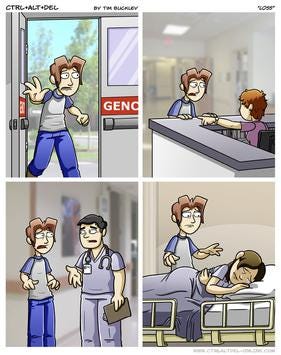
I fucking love Suzume. The movie, as well as the character. What a sad little bean, what a hurt soul, but what a brazen hunger for life.
At the beginning of the movie, Souta gets angry at Suzume for following him and for putting herself in danger and he yells “Aren’t you afraid of dying?!”
“No.”
Her response is a red flag, but it’s such a shock to Souta and the audience. Here is this young girl, fighting so hard to save other people, to make right what has gone wrong, but is someone who doesn’t think her life is worth…anything.
Back to her mom dying and being a burden on her aunt. Back to her dreams of becoming a nurse and helping others. Back to her pursuit of the anomalies plaguing Japan.
Suzume is such a selfless person.
It’s to her detriment.
And yet.
It’s the best thing about her while it is also the thing that forces her on this whirlwind adventure.
Suzume is ready to die for someone she just met. She is ready to die to make sure that these monsters protruding from these doors are put down.
Suzume is so ready to die, because she doesn’t have anything to live for.
And only when she is finally faced with her own mortality, the warmth of her breath freezing as soon as it leaves her mouth, does she realize how beautiful a life really is.
BONUS: Expectations
Knowledge is a dangerous tool. Ignorance may be bliss, but knowledge is a double-edged sword that can keep you from suffering or be the root cause of it.
If you know any of Director Makoto Shinkai’s previous works (Your Name, Weathering With You, Garden of Words, 5 Centimeters Per Second) you will notice a stylistic echo across each of them. You will also realize that he carefully picks themes that are reminiscent of the work that precedes itself.
Which makes sense because we are all creatures of habit that develop our own style. That is an iterative process that takes time and borrows from every shape that came before it.
That’s a really long-winded way to say that we, as an audience, develop our own expectations for his works and are gravely disappointed when the manic-pixie-dream-girl of his works we’ve fantasized is not real.
Sure there’ll be a few hit or misses.
Not everything will be a massive blockbuster success.
Having seen Your Name and now Suzume, it feels like there is a definitive bridge between the two worlds, but there is somewhat of a disconnect. Somewhere along the pipeline, there is a shattered breaker and we can feel the familiarity, but we feel it as distinctly different.
It’s beautiful. And we know that Shinkai will deliver. But how he will deliver, what will be the contents of it. We don’t know.
We don’t know, but we have expectations regardless.
Not good, not bad. But we know. It’s this knowledge that taints us, it’s this knowledge that allows us to enjoy things more.
“Where ignorance is bliss, 'tis folly to be wise”
“Ode on a Distant Prospect of Eton College” (1742), Thomas Gray




